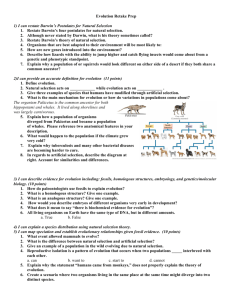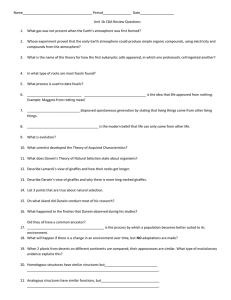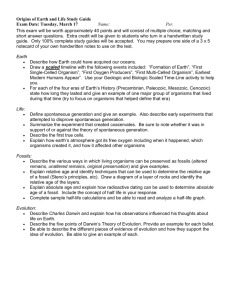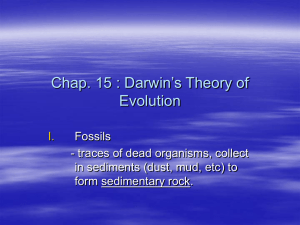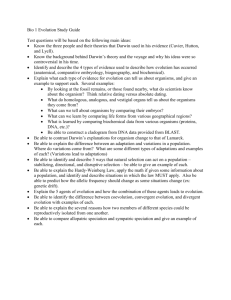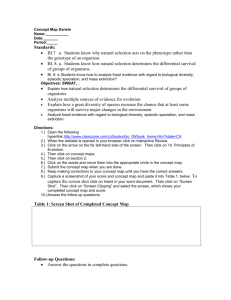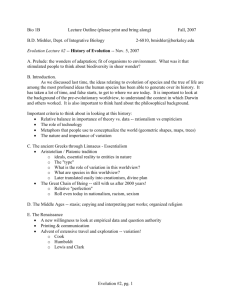Evolution/Origins of Life Test
advertisement
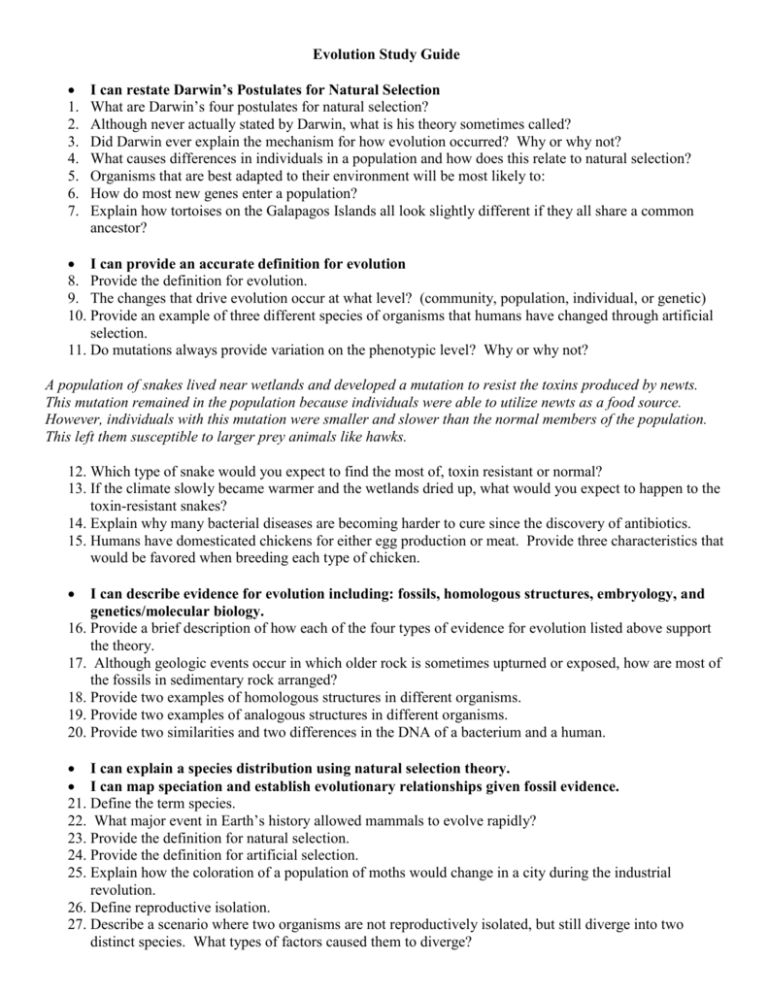
Evolution Study Guide 1. 2. 3. 4. 5. 6. 7. I can restate Darwin’s Postulates for Natural Selection What are Darwin’s four postulates for natural selection? Although never actually stated by Darwin, what is his theory sometimes called? Did Darwin ever explain the mechanism for how evolution occurred? Why or why not? What causes differences in individuals in a population and how does this relate to natural selection? Organisms that are best adapted to their environment will be most likely to: How do most new genes enter a population? Explain how tortoises on the Galapagos Islands all look slightly different if they all share a common ancestor? I can provide an accurate definition for evolution 8. Provide the definition for evolution. 9. The changes that drive evolution occur at what level? (community, population, individual, or genetic) 10. Provide an example of three different species of organisms that humans have changed through artificial selection. 11. Do mutations always provide variation on the phenotypic level? Why or why not? A population of snakes lived near wetlands and developed a mutation to resist the toxins produced by newts. This mutation remained in the population because individuals were able to utilize newts as a food source. However, individuals with this mutation were smaller and slower than the normal members of the population. This left them susceptible to larger prey animals like hawks. 12. Which type of snake would you expect to find the most of, toxin resistant or normal? 13. If the climate slowly became warmer and the wetlands dried up, what would you expect to happen to the toxin-resistant snakes? 14. Explain why many bacterial diseases are becoming harder to cure since the discovery of antibiotics. 15. Humans have domesticated chickens for either egg production or meat. Provide three characteristics that would be favored when breeding each type of chicken. I can describe evidence for evolution including: fossils, homologous structures, embryology, and genetics/molecular biology. 16. Provide a brief description of how each of the four types of evidence for evolution listed above support the theory. 17. Although geologic events occur in which older rock is sometimes upturned or exposed, how are most of the fossils in sedimentary rock arranged? 18. Provide two examples of homologous structures in different organisms. 19. Provide two examples of analogous structures in different organisms. 20. Provide two similarities and two differences in the DNA of a bacterium and a human. I can explain a species distribution using natural selection theory. I can map speciation and establish evolutionary relationships given fossil evidence. 21. Define the term species. 22. What major event in Earth’s history allowed mammals to evolve rapidly? 23. Provide the definition for natural selection. 24. Provide the definition for artificial selection. 25. Explain how the coloration of a population of moths would change in a city during the industrial revolution. 26. Define reproductive isolation. 27. Describe a scenario where two organisms are not reproductively isolated, but still diverge into two distinct species. What types of factors caused them to diverge?

